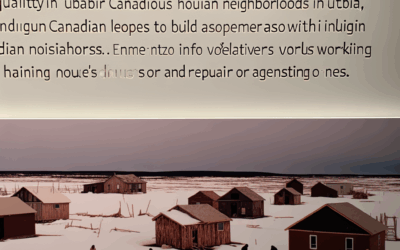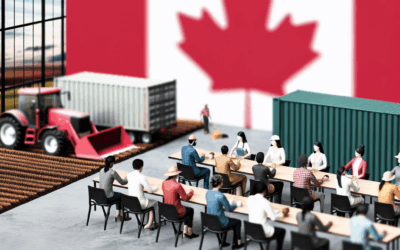High Immigration Levels and Housing Strain in Canada: A Growing Challenge
Canada has long been celebrated as a multicultural nation that welcomes immigrants with open arms. However, the country’s ambitious immigration targets, aimed at addressing labor shortages and boosting economic growth, have sparked a pressing debate about the impact on the housing market. With record-high immigration levels, the demand for housing has surged, exacerbating an already critical housing shortage in many cities. This article delves into the complex relationship between immigration and housing strain in Canada, exploring the underlying causes, the challenges faced by newcomers and long-term residents, and potential solutions to this multifaceted issue. By examining the interplay between population growth and housing supply, we aim to shed light on one of Canada’s most pressing socio-economic challenges.
The Role of Immigration in Canada’s Population Growth
Immigration has been a cornerstone of Canada’s population strategy, with the government setting ambitious targets to attract hundreds of thousands of newcomers annually. This influx has helped offset the country’s aging population and low birth rates, ensuring a steady labor force. However, the rapid population growth driven by immigration has also intensified pressure on essential infrastructure, particularly housing. Major urban centers like Toronto, Vancouver, and Montreal, which attract the majority of immigrants, are struggling to keep up with the escalating demand for affordable housing. This strain is not only a challenge for newcomers but also for long-term residents who face rising rents and home prices.
The Housing Crisis: A Growing Concern
Canada’s housing crisis is characterized by skyrocketing prices, limited supply, and a growing gap between housing affordability and income levels. The influx of immigrants has further strained an already fragile housing market, as newcomers seek homes in urban areas where housing shortages are most acute. This has led to increased competition for rental properties and a surge in housing prices, making it difficult for both immigrants and Canadian-born residents to secure affordable housing. The crisis is particularly pronounced in cities with high immigration rates, where the demand for housing far outstrips the available supply.
Challenges for Newcomers and Long-Term Residents
For immigrants, finding affordable housing is often one of the first and most significant hurdles they face upon arrival. Language barriers, limited credit history, and unfamiliarity with local housing markets can further complicate their search. Meanwhile, long-term residents are grappling with the ripple effects of the housing strain, including rising rents, reduced availability of rental units, and the prospect of being priced out of their communities. This dual challenge has created tensions in some neighborhoods, highlighting the need for inclusive policies that address the needs of both newcomers and existing residents.
Policy Responses and Shortcomings
Governments at the federal, provincial, and municipal levels have introduced various measures to address the housing crisis, including increased funding for affordable housing projects and incentives for developers to build more units. However, critics argue that these efforts have been insufficient to meet the scale of the problem. Bureaucratic delays, zoning restrictions, and labor shortages in the construction industry have hindered the timely development of new housing. Additionally, while immigration policies are designed to support economic growth, they often fail to account for their impact on housing demand, creating a disconnect between population growth and housing supply.
Balancing Immigration and Housing: Towards Sustainable Solutions
Addressing the housing strain caused by high immigration levels requires a multifaceted approach. Governments must prioritize housing as a key component of immigration planning, ensuring that housing supply keeps pace with population growth. This could involve incentivizing the construction of affordable housing, streamlining approval processes for new developments, and encouraging population dispersion to less densely populated regions. Collaboration between federal, provincial, and municipal governments, alongside private sector stakeholders, is essential to create a sustainable balance between immigration and housing. By fostering innovation and long-term planning, Canada can continue to welcome immigrants while ensuring that all residents have access to affordable housing.
Conclusion: Navigating the Intersection of Immigration and Housing
Canada’s high immigration levels have undeniably contributed to the country’s economic vitality and cultural diversity. However, the resulting housing strain poses significant challenges that require urgent attention. By examining the causes and consequences of this issue, it becomes clear that a coordinated and forward-thinking approach is necessary to ensure that housing supply meets the demands of a growing population. Policymakers, industry leaders, and communities must work together to implement sustainable solutions that balance the benefits of immigration with the need for affordable housing. As Canada continues to evolve as a nation of immigrants, addressing this challenge will be crucial to maintaining its reputation as a welcoming and inclusive society.



